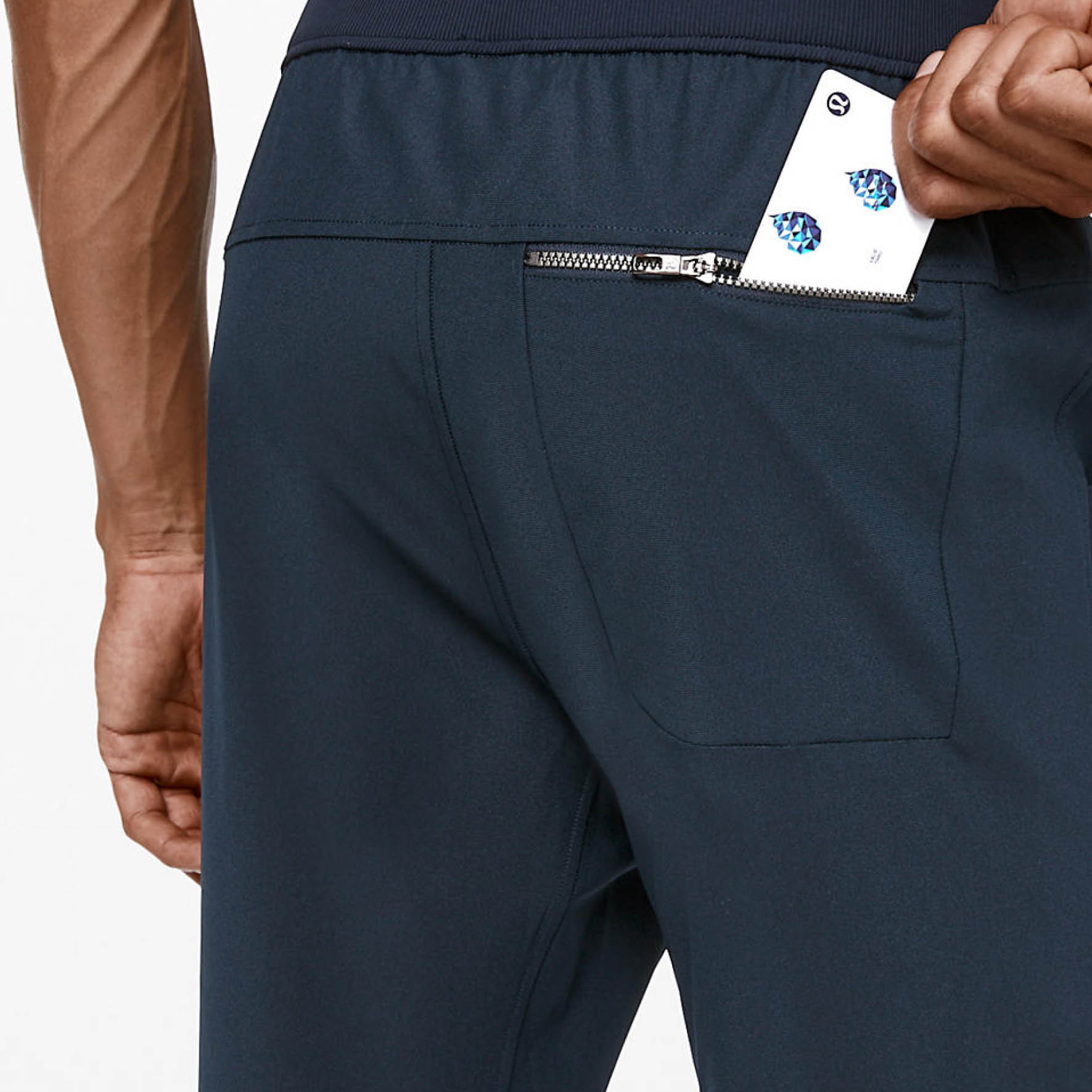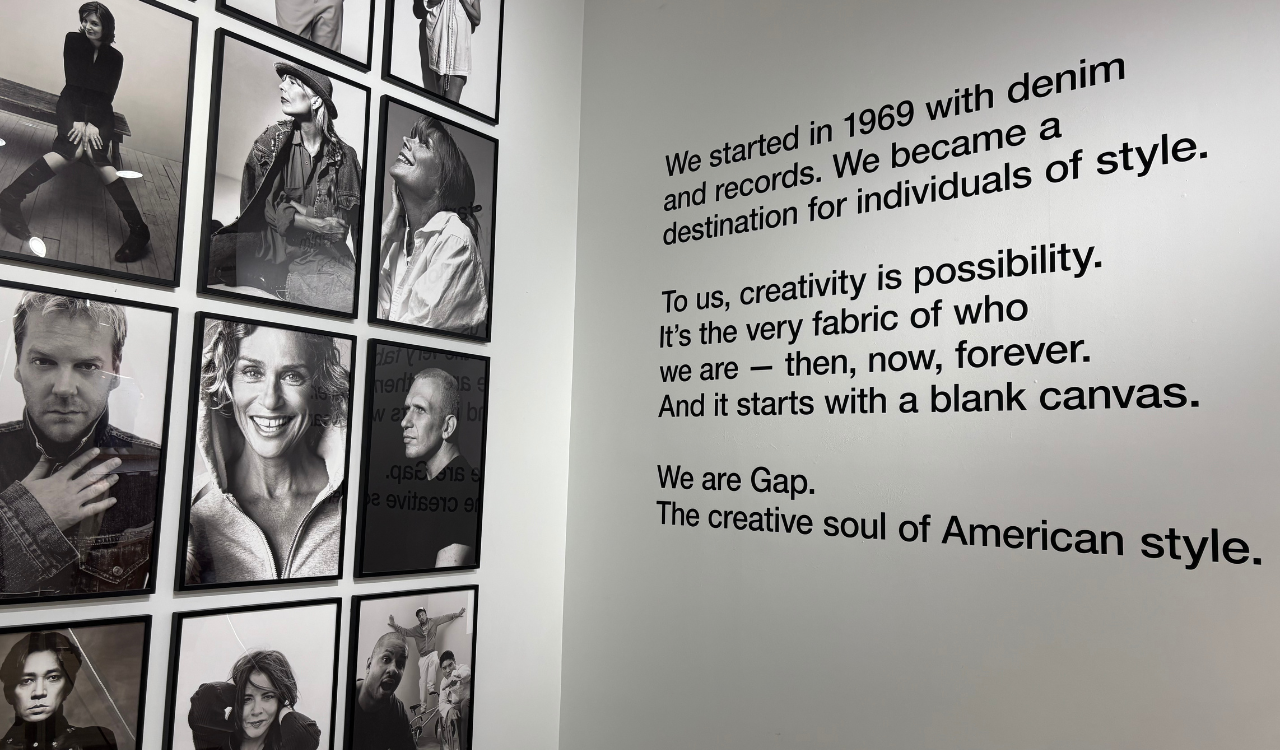Back in 2014 when Lululemon introduced its first line of men\’s wear, it had a lot of people scratching their heads. At the time, Brian Sozzi, at-the-time chief equities strategists at Belus Capital and a contributor to Men\’s Health, felt the brand was too tightly aligned with women and that it faced an uphill battle to attract men. \”I have never been helped by a male store associate at Lululemon and the brand seems to mostly attract women,\” he said. \”It\’s seen as a very pro-female brand and that is intimidating to men.\”
Yet pivoting to men\’s athletic market was a logical step at the time because it was starting to plateau in its core women\’s market.
Pioneer in Athleisurewear
Lululemon was the brand that singlehandedly started the $122.6 billion global athleisurewear trend, but it also launched hundreds of lower-priced copy-cats, including Athleta, Fabletics, Outdoor Voices, Title 9, and Sweaty Betty, as well as opened the eyes of Nike, Adidas, Puma, Under Armour and the other major athletic brands of the opportunity in the women\’s market looking for stylish, comfortable, technologically-advanced fashion for her active lifestyle.
Lululemon’s gamble: Do men really want to look stylish at the gym and will they pay $68+ for a pair of gym shorts and up for the privilege?
With competition in women\’s athleisurewear mounting, Lululemon decided to take on the \’big boys\’ in athletic wear and bring more style, comfort, and technology to their lives as well. The company defines its core clothing offerings for both men and women as \”yoga, run, and train,\” as well as an expanded range of activities called OTC (office, travel, commute) and rest/recovery to help its customers achieve a \”Life on the Go.\”
In other words, Lululemon planned to bring the same fashionable lifestyle approach to men as it had so successfully to women. The gamble was: Do men really want to look stylish at the gym and will they pay $68+ for a pair of gym shorts and up for the privilege?
\”On Sunday, when I go to the gym, I wear simple, basic Nike shorts I picked up at the factory outlet,\” says Jono Bacon, a consultant specializing in communities and author of People Powered: How Communities Can Supercharge your Business, Brand and Teams, who\’s studied brands like Lululemon and Nike. \”I think a lot of men are like that. It doesn\’t matter,\” he says.
Menswear Business on Track
In 2016, Lululemon went on the record at the Jefferies Consumer Conference about its plans for the men\’s business: $1 billion by 2020. At that time, it aimed to grow the women\’s business to $3 billion. By year-end 2018, it was well on its way, reporting $671 million for men\’s and $2.6 billion for women\’s.
In the 2018 year-end earnings call, then-COO Stuart Haselden said, \”There is a lot of runway for us to continue to grow our men\’s business. With just over 20 percent penetration today, we really believe that Lululemon can be a gender-neutral brand and that our men\’s business can ultimately be as big as our women\’s.\”
With third-quarter 2019 completed, the company announced that men\’s revenues were up 38 percent in the quarter, though they didn\’t report the dollar amounts, and women\’s was up 20 percent.
Overall, they said company guidance puts LULU on track to reach $3.895 to $3.91 billion in fiscal 2019 revenues, which would be year-over-year growth in the 18.5% to 19% range. One-fifth of that would put men\’s between $779 to $782 million. During the earnings call, chief product officer Sun Choe said men\’s outerwear, pants, layering pieces, and underwear were \”standouts\” during the quarter.
Doubling the menswear business to reach $1.4 billion in revenues by 2023 is one of the pillars of the company\’s Power of Three strategic initiative that new CEO Calvin McDonald set shortly after his arrival in August 2018. The other goals include doubling its digital businesses, quadrupling the size of its international business, and generating double-digit growth in North America and women\’s businesses.
In advance of third-quarter reporting, Cowen retail analyst John Kernan released a detailed study projecting Lululemon\’s prospects based on Cowen\’s proprietary financial model. That puts the men\’s category to achieve the $1 billion target by 2021, not 2020 as the company originally envisioned in 2016.
Saying he sees \”a moderation in men\’s run rate beyond 2019,\” Kernan expects competition from Nike, Adidas, Under Armour and Puma in the $83 billion sports apparel market to heat up. However, he still says Lululemon has a \”great deal of white space\” in the men\’s athleisure segment of the larger men\’s sportswear market, which remains smaller than women\’s athleisure.
This is where Bacon sees Lululemon\’s biggest opportunity. \”I am wearing Lululemon shorts right now. In Northern California where I live, Lululemon is almost like a uniform. In my mind it is a brand associated with self-care and responsibility. But it depends on where you live. I don\’t know that men in Montana would see it like that.\”
And that is Lululemon\’s challenge in menswear. In doubling its menswear business, it must connect with men beyond its urban, metrosexual base to a wider audience.
Are Products or Brands Gendered?
While the culture\’s understanding of gender is rapidly evolving, a new study by Morning Consult finds consumers still have deeply embedded gender associations around consumer products and activities. For example, yoga, which put Lululemon on the map, is overwhelmingly perceived as a female-gendered activity, with 62 percent of the 2,200 U.S. adults surveyed rating yoga as feminine and only 36 percent viewing it as gender-neutral. Athleisurewear is more gender-neutral (69 percent), but it still skews toward the feminine (18 percent) more so than masculine (13 percent).
As much as we aim not to be sexist or apply sex-based stereotypes, a recent study out of the Toulouse Business School in France, with the unintelligible title of \”Gendered products as the extended phenotype of human sexual dysmorphism,\” found that gender-typical products send powerful subliminal signals that increase the sexual attractiveness and desirability of their owners. The reverse was found for gender-atypical products.
For example, a man drinking whiskey, the most masculine beverage in the Morning Consult survey, would be found more sexually attractive than one drinking a perceived feminine pina colada.
This puts the gendered perception of the Lululemon brand in perspective. Analyst Sozzi took issue with the highly feminine Lululemon brand name and logo. \”The logo should look more rugged to appeal to men,\” he said.
Or as Utah State University marketing professor Aaron Brough, who advised on the Morning Consult study, said, \”In general, if men perceive a product to be feminine, they perceive that as a threat to their gender identity if they were to use that product.\”
Women\’s Passion for Lululemon Could Transfer
So far, the brand seems to have confronted the feminine bias in its menswear business, but it may yet hit a wall as it expands beyond its urban core. \”The stores still read incredibly feminine,\” a company insider told me, but who asked to remain anonymous. Even with the company making progress in its co-located stores with a full men\’s department on one side and a woman\’s on the other, the insider said, \”It is a bad shopping experience from a man\’s standpoint.\”
The company\’s new experiential stores in Chicago and at the Mall of America in Minneapolis aim to be more gender-neutral. The experiential store model combines a retail store with a \”fuel bar\” for healthy refreshments and a fitness \”sweat studio\” with both men\’s and women\’s locker rooms. But there are only two of those stores compared to nearly 300 of the other kind of stores in the U.S.
My insider source also said, \”If men\’s is going to be a continued growth area, then men buying for men has to be the focus.\” Today this insider also shared that about 40 percent of the men\’s sales come from women buying for the men in their lives.
This, however, may be the unspoken key to Lululemon\’s men\’s strategy: unlock the influence that women have on the men in their lives and around them. Or as Bacon says extend the community that Lululemon has built with women to include men.
A recent Nielsen study found that word of mouth recommendations from friends and family are the bomb when it comes to any other type of marketing. Some 92 percent of consumers say they trust personal recommendations, as compared with 47 percent for company advertising on TV, magazines, or newspapers.
Recommendations from friends and family also lead on social media, with family members\’ social media posts said to have influenced 59 percent of those surveyed by Ipsos, as compared with only 18 percent for social media influencers and 17 percent of celebrities.
Community Matters
Lululemon, as compared with Nike, Under Armour and the rest, has a unique community-based program that generates a much more powerful connection with its customers – primarily women now – who exert a powerful influence on men. That sense of belonging to a community is what the Lululemon brand delivers to its customers, beyond selling clothes, who then are primed and ready to generate word-of-mouth and personal endorsements among their friends and family.
While Nike is leaning into a similar community-building approach, it remains heavily invested in major media advertising campaigns and high-profile paid celebrity endorsers, who garner lots of media attention (Colin Kaepernick), but lack that personal connection.
Lululemon, by contrast, has created a powerful community through its 1,500-member ambassador program and its user-generated content (USG). Lululemon ambassadors are recruited from the local store communities and are authentic influencers-in-chief on the local level and its USG Instagram #TheSweatLife platform has more than 1 million posts.
These grass-roots marketing efforts make Lululemon\’s customers feel part of the brand, which makes them more likely to want to bring their personal community of friends, family, husbands, and brothers into their Lululemon community too.
Because Nike remains fixated on broadcast push marketing, its spending on marketing, estimated by Cowen to be roughly 8 percent to 9 percent of sales, far surpasses Lululemon\’s. \”We note that LULU\’s customer acquisition costs are extremely low relative to customer lifetime value – as the brand spends less than any peers on marketing,\” Cowen\’s Kernan wrote.
So maybe to continue to grow its men\’s business, Lululemon just needs to keep doing what it\’s doing and continue to make women feel passion for the brand so that they in turn share their passion with the men in their lives.




